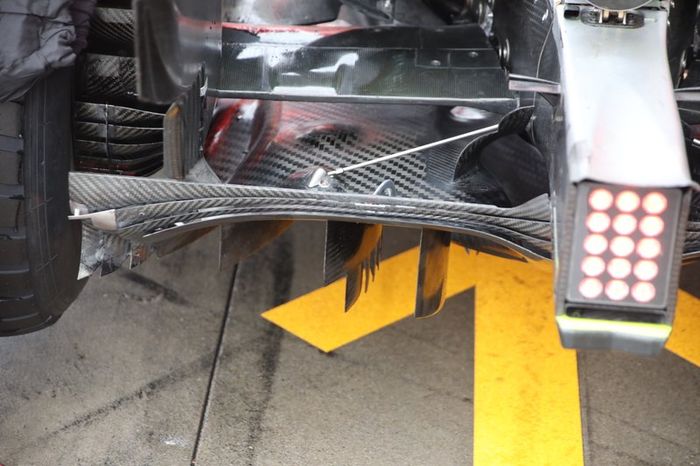Tech verdict: How Ferrari really turned the tables on rivals
Ferrari turned the tables on its Formula 1 rivals since the summer break, not only taking victories at low-downforce tracks where expectations were high, but also at races where they were expected to be on the backfoot. The result in Russia may not have swung in its direction, but the signs are there that it will be able to fight Mercedes more often at the remaining races this season.

Photo by: Giorgio Piola
Giorgio Piola's F1 technical analysis
Giorgio Piola is the preeminent Formula 1 technical journalist. View our full selection of Giorgio's technical illustrative content
The SF90, with the new higher downforce package, made a big leap forward and while the aerodynamic upgrade will clearly have resulted in some additional drag, it’s been able to exploit superior power unit performance to overcome this and retain a top speed advantage relative to Mercedes.
This came as a blow to the Silver Arrows, whose Spec-3 update has failed to live up to expectations and requires that it operates below its upper thresholds in order to maintain reliability. Ferrari, who already held the trump card in terms of outright power, added more performance with its new specification power unit in Italy and continued to exploit it in the subsequent rounds.
The impressive thing is that it’s been able to unlock performance across the board, giving the upper hand during the race and another marginal boost in performance for qualifying too. Charles Leclerc has reaped the reward of this qualifying boost, taking four pole positions in the last four races, indicating that there’s some margin to be gained from setup and driving style.
The most important factor, and perhaps one that’s being overlooked, is that the aerodynamic update implemented by Ferrari means the team is now able to trigger tyre performance in a way it couldn’t before. It appears that the Scuderia was unable to generate enough heat in the front tyres before, meaning it had to operate in a much narrower working window, reducing tyre performance and lifespan relative to their competitors.
It would also appear that Ferrari’s overall concept, taking into account the change in aerodynamic regulations for 2019, had not accounted for Pirelli’s thinner gauge rubber – the tyre supplier reducing the tyres tread by 0.4mm, as it did for several rounds in 2018. The updates introduced in Singapore sought to overturn its lower speed weaknesses, but even Ferrari didn’t think the car would respond as well as it actually has to them.
Here are the changes that boosted Ferrari’s form; click on the arrows to scroll through the images…
Mercedes plays the longer game
While the resurgence of Ferrari over the last few races has added to the spectacle, and brings us hope of a better or closer end to the 2019 season, Mercedes is already eyeing gains it may be able to make for 2020.
Red Bull slips off the pace
Although magnified by Ferrari’s sudden turn of speed, Red Bull has fallen back to third place in the pecking order – despite races at tracks where it was expected to excel and repeat its form before the summer break.
Be part of Motorsport community
Join the conversationShare Or Save This Story
Subscribe and access Motorsport.com with your ad-blocker.
From Formula 1 to MotoGP we report straight from the paddock because we love our sport, just like you. In order to keep delivering our expert journalism, our website uses advertising. Still, we want to give you the opportunity to enjoy an ad-free and tracker-free website and to continue using your adblocker.






















Top Comments